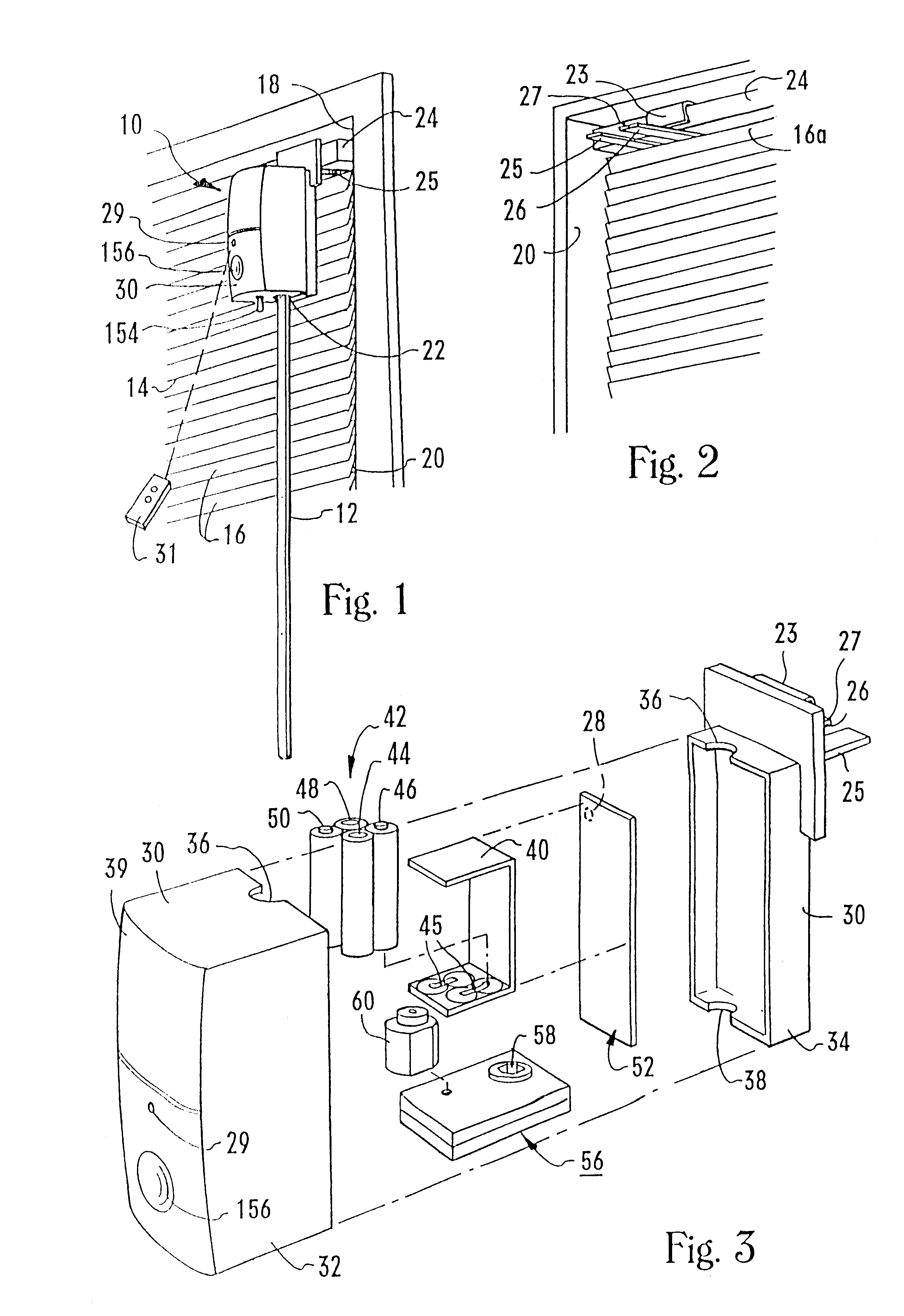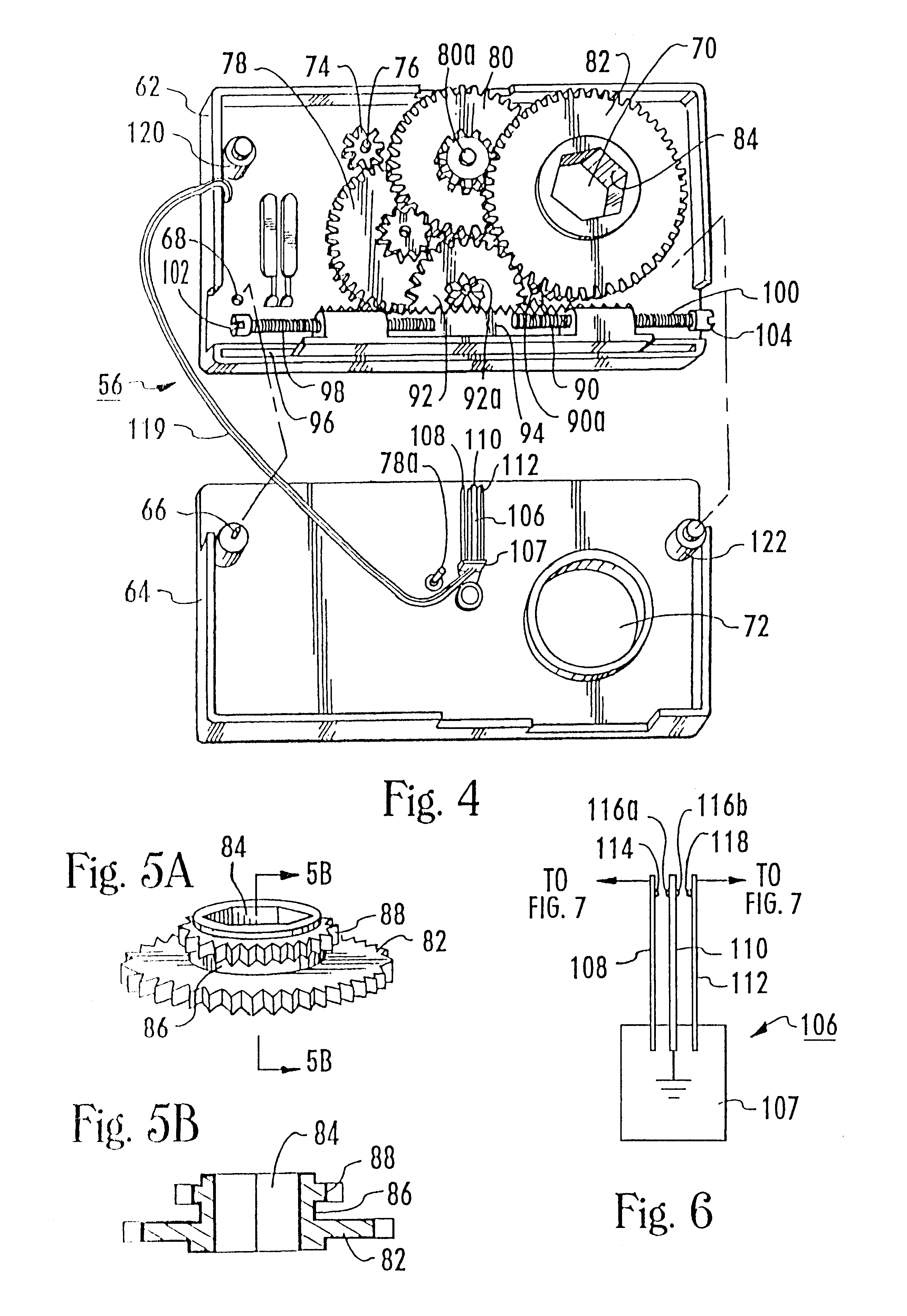Head rail-mounted actuator for window coverings
a head rail and actuator technology, applied in the direction of light control, dynamo-electric motor/converter starter, light control, etc., can solve the problems of consuming a relatively large amount of power, affecting the operation of automatic blind control systems, and being difficult to opera
- Summary
- Abstract
- Description
- Claims
- Application Information
AI Technical Summary
Benefits of technology
Problems solved by technology
Method used
Image
Examples
Embodiment Construction
Referring initially to FIG. 1, an actuator is shown, generally designated 10. As shown, the actuator 10 is in operable engagement with a rotatable operating baton 12 of a mini-blind 14 having a plurality of louvered slats 16.
In the embodiment shown, the mini-blind 14 is a Levellor®-type mini-blind which is mounted on a window frame 18 to cover a window 20, and the baton 12 is rotatable about its longitudinal axis. When the baton 12 is rotated about its longitudinal axis, each of the slats 16 is caused to rotate about its respective longitudinal axis to move the mini-blind 14 between an open configuration, wherein a light passageway is established between each pair of adjacent slats, and a closed configuration, wherein no light passageways are established between adjacent slats.
While the embodiment described above discusses a mini-blind, it is to be understood that the principles of the present invention apply to a wide range of window coverings that have louvered slats.
As can be app...
PUM
 Login to View More
Login to View More Abstract
Description
Claims
Application Information
 Login to View More
Login to View More - R&D
- Intellectual Property
- Life Sciences
- Materials
- Tech Scout
- Unparalleled Data Quality
- Higher Quality Content
- 60% Fewer Hallucinations
Browse by: Latest US Patents, China's latest patents, Technical Efficacy Thesaurus, Application Domain, Technology Topic, Popular Technical Reports.
© 2025 PatSnap. All rights reserved.Legal|Privacy policy|Modern Slavery Act Transparency Statement|Sitemap|About US| Contact US: help@patsnap.com



